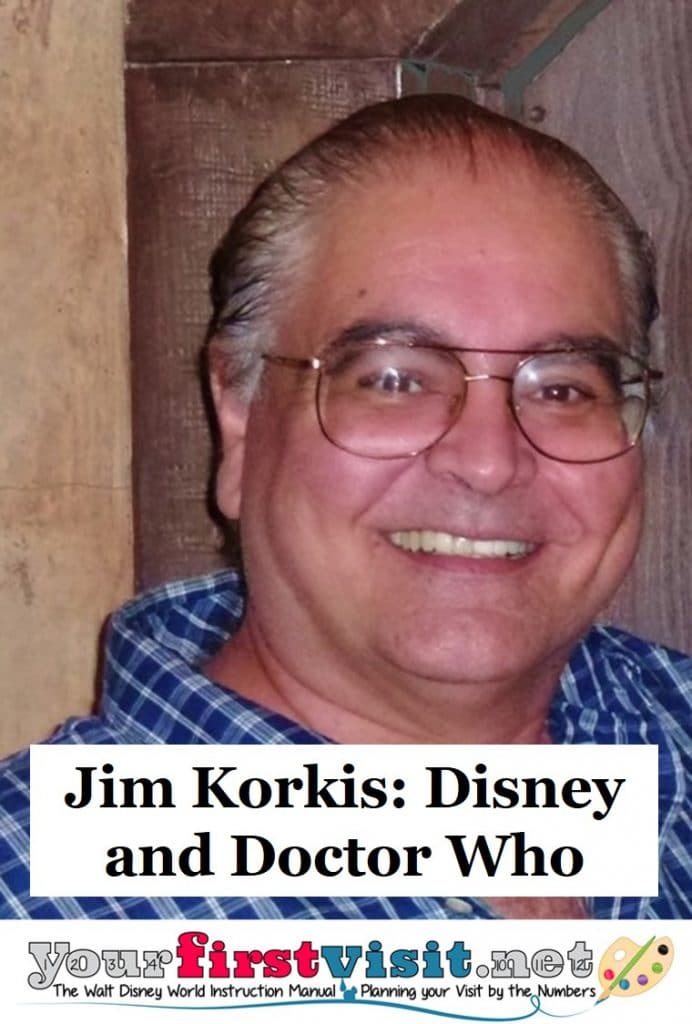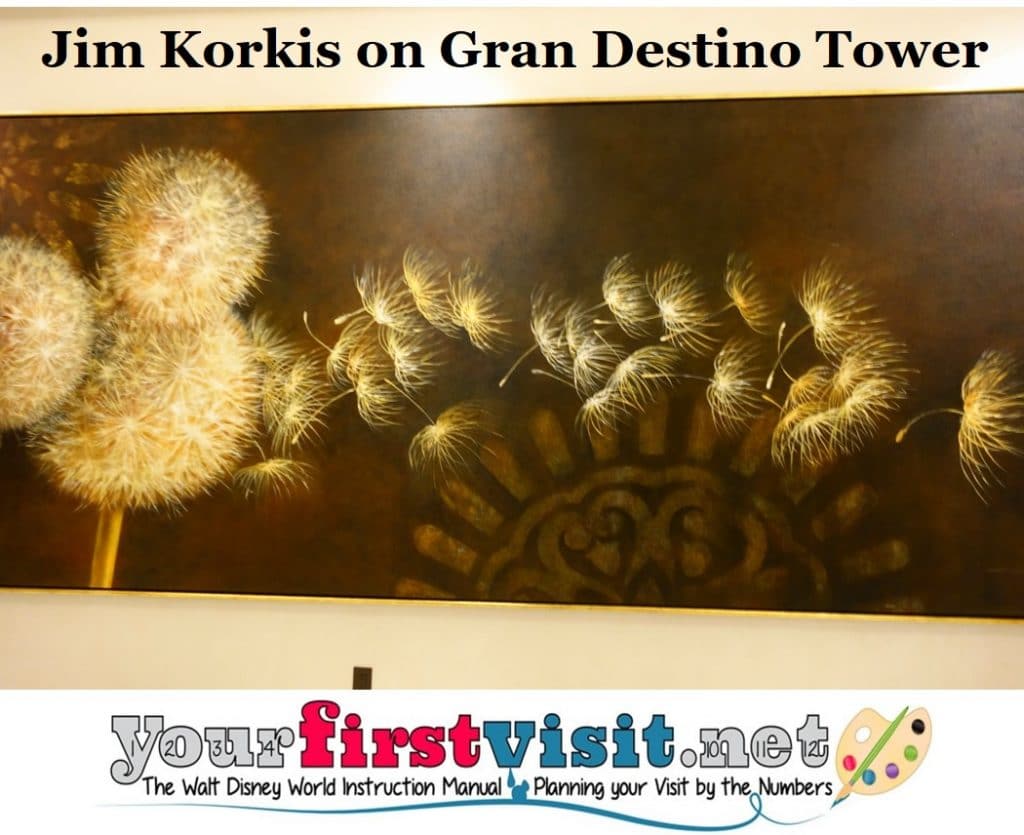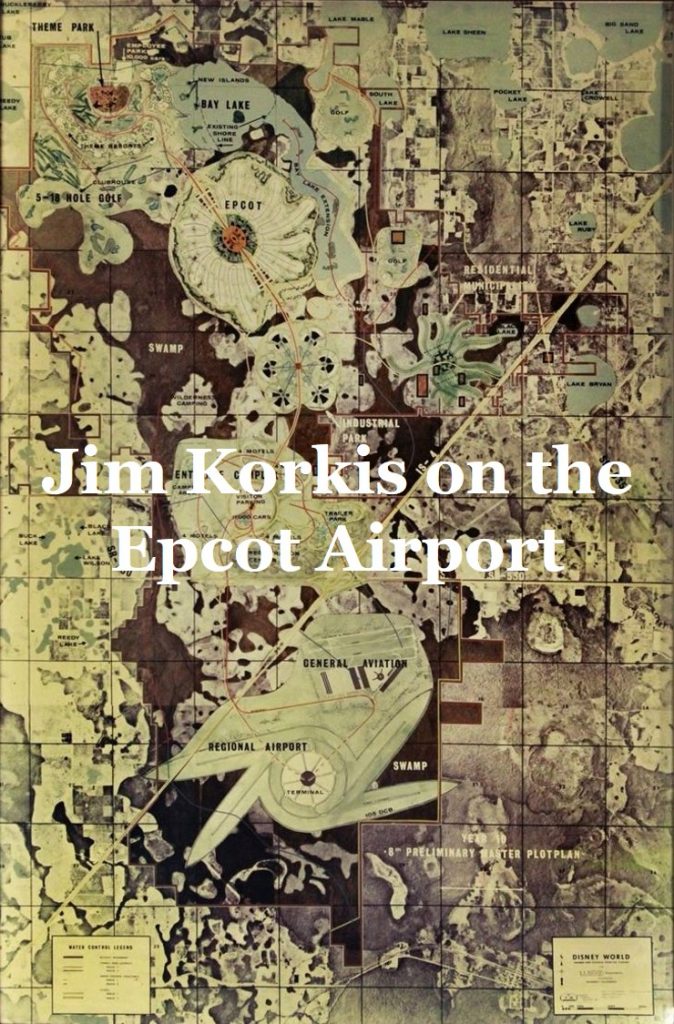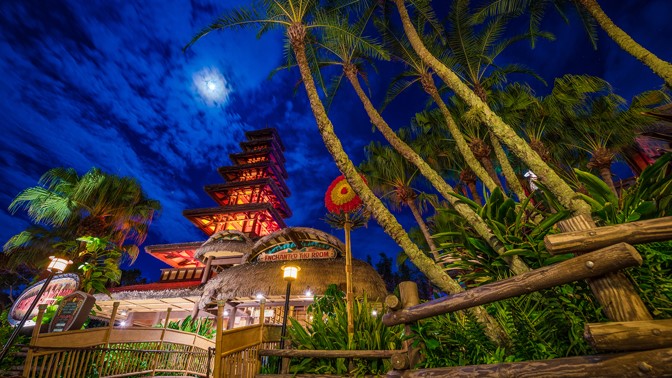Category — A Friday Visit with Jim Korkis
A Friday Visit with Jim Korkis: The Epcot Airport
Welcome back to Fridays with Jim Korkis! Jim, the dean of Disney historians, writes about Walt Disney World history every Friday on yourfirstvisit.net.
THE EPCOT AIRPORT
By Jim Korkis
In 1970, only nineteen percent of visitors came to Central Florida by airplane. The majority of people journeyed there by car, usually on their way to Miami.
It was obvious that with the opening of Walt Disney World, more tourists would be coming by plane.
By 1995, more than fifty percent of WDW guests, especially international ones, came by plane rather than car. That year counted for over twenty-two million visitors taking flights to Central Florida.
Eastern Airlines, the official airline of Walt Disney World from 1970-1987, doubled its flights to Orlando from 40 to 80 at the beginning of 1972. Eastern offered service to Orlando from sixty different cities across the United States
Walt Disney’s original plan for the Florida property was to have an operating airport with three to four parallel runways on the land that is now occupied by the city of Celebration. The entitlements in the Reedy Creek Improvement District legislation allowed for Disney to build such an airport.
An Entrance Complex and Registration Center staffed by cast members who spoke various languages would be there to assist foreign visitors.
That primary entrance to the Epcot location (the Main Gate) would be roughly across the street from Walt’s airport. The nondescript building that houses Entertainment, Merchandising and Disney Design Group on Sherberth Road is known as “Main Gate”, since that is where the planned entrance to the property was to be located.
In 1971, there was no Orlando International Airport — that didn’t come until 1976. There was just Orlando McCoy Jetport, which had limited capacity. (Orlando International’s “MCO” airport designation actually originates from the McCoy Air Force Base formerly on the same site.)
Expectations were that more than 400 people would be working at the Epcot airport by the time Phase Two of the Florida property was completed in 1976. By then, there were to have been three new resorts near the Magic Kingdom and new attractions.
Disney projected that by 1991 the airport would employ more than 2,000 full-time workers and would be surrounded by hundreds of motels accommodating the many travelers coming to visit the Epcot area.
According to Marvin Davis, who created the initial layout for Walt Disney World, “This airport was planned after one in Cincinnati. We made a special trip to New York and met with the guy in charge of that airport who said it worked like a charm.
“The circular plan cuts down the area that you need by half, instead of those long runways that were standard. They had a circular runaway plan and it worked on a banked curve for the takeoff. Of course, we would have had to get all kinds of approvals from the Federal Aviation Administration.”
As the plans evolved, this international airport would have been located in the southwest portion of the land and in the north east would be a second, smaller facility to handle general aviation.
Walt’s intention was that the architecture would mirror the distinctive Theme Building at the Los Angeles International Airport built in 1961 by architects that Walt liked including William Pereira, Charles Luckman and Welton Becket.
Disney could never get a major air carrier to partner with them in the costs for the airport, especially with the oil crisis in 1973, although Delta Airlines came close at one point to signing on.
The continuing expansion of Orlando International Airport, as well as drastic changes to the original plans for Epcot, resulted in the airport project quietly disappearing as an unnecessary expense. Basically, when Disney abandoned the plans to build the Epcot city that Walt Disney had envisioned, the airport was abandoned as well.
* * * * *
Thanks, Jim! And come back next Friday for more from Jim Korkis!
In the meantime, check out his books, including his latest, The Unofficial Walt Disney World 1971 Companion: Stories of How the World Began, and Secret Stories of Walt Disney World: Things You Never You Never Knew, which reprints much material first written for this site, all published by Theme Park Press.
Follow yourfirstvisit.net on Facebook or Twitter or Pinterest!!
October 5, 2019 No Comments
A Friday Visit with Jim Korkis
Welcome back to Fridays with Jim Korkis! Jim, the dean of Disney historians, writes about Walt Disney World history every Friday on yourfirstvisit.net.
YOUR PERSONAL DISNEY LIBRARY (21)
By Jim Korkis
- The Wonders of Walt Disney World by Aaron H. Goldberg
When reviewing a book, in general, a reviewer should try to keep at least three things in mind: What was the author trying to do? How well did they do it? Was it worth doing in the first place?
In general, I avoid reviewing guidebooks for a number of reasons. First, they have a limited lifespan since Disney changes so frequently and without warning so that they are often already out-of-date before they are even published.
Second, there are many terrific and well-proven guidebooks that are already in existence and are updated each year including the iconic Birnbaum guides as well as The easy Guide among others. In addition, for people needing information about WDW, there are multiple websites that not only supply practical information but share valuable tips and back story information as well.
When I saw the title The Wonder of Walt Disney World on a new book, I was intrigued. I also saw that the author in the description emphasizes that he was not producing a guidebook.
In the introduction, Goldberg writes, “It is a book with tips, trivia and secret stories…I aim to give you a backstory on the backstory as we work our way through each and every Disney park, visiting all the popular attractions, highlighting the secrets and magic that make WDW so special.”
With his stated goal as to create “an informative resource…that is a comprehensive and entertaining tour designed for both easy reading and reference”, then the book falls far short of those expectations.
In short, it is just another guidebook, and not a very effective one.
Goldberg admits that much of the information he uses came from WDW News, the Walt Disney Company’s fact, information and press-release website for the media and public. He uses the exact words from that site to describe the attractions, restaurants and more and accompanies them all with the review ratings (used by permission) from TripAdvisor. So much of the information comes word-for-word from those two websites.
His secret stories are often just direct quotes from other books like Rolly Crump’s It’s Kind of a Cute Story, Alex Wright’s Imagineering Field Guides, Jeff Kurtti’s Since the World Began, Melody Malmberg’s The Making of Disney’s Animal Kingdom, Jason Surrell’s The Haunted Mansion: Imagineering a Disney Classic and other familiar and still easily attainable books, as well as articles from the Orlando Sentinel newspaper. I liked that he did indeed acknowledge those sources.
Perhaps my expectations were too high judging from the author’s description of what he thinks the book actually is. He emphatically states that it is not a guidebook so I am writing this book to let you know that it is a guidebook.
I was not a fan of his offhand conversational approach to walking through each park as it offered no new information or new perspective on existing information but you might enjoy it.
Goldberg has visited the Walt Disney World Resort “more times than his wallet cares to remember” and is the author of The Disney Story which is a compilation of newspaper articles and the short kid-oriented biography Meet the Disney Brothers.
I am still puzzled why he felt this book filled a gap not supplied by so many other books and websites that do it so much better, especially for people who have never been to Walt Disney World. However, I love the title of the book but in this case, buyer beware if you purchase it thinking it is something other than a guidebook.
* * * * *
Thanks, Jim! Jim has more on the history of Disney guidebooks here, in a fine essay that fittingly ends with mine! (He wrote it years before he began writing for me…) And come back next Friday for more from Jim Korkis!
In the meantime, check out his books, including his latest, The Unofficial Walt Disney World 1971 Companion: Stories of How the World Began, and Secret Stories of Walt Disney World: Things You Never You Never Knew, which reprints much material first written for this site, all published by Theme Park Press.
Follow yourfirstvisit.net on Facebook or Twitter or Pinterest!!
September 27, 2019 No Comments
A Friday Visit with Jim Korkis: Doctor Who and Disney
Welcome back to Fridays with Jim Korkis! Jim, the dean of Disney historians, writes about Walt Disney World history every Friday on yourfirstvisit.net.
DOCTOR WHO AND DISNEY
By Jim Korkis
Doctor Who is the main character in a long-running British science-fiction television series of the same name. He is a time-traveling, humanoid-looking alien Time Lord whose method of transportation is the TARDIS that from the outside looks like a typical blue British police call box.
In April 1981, Doctor Who producer, John Nathan-Turner had approached Disney’s London office with the idea of setting a story at Walt Disney World where The Doctor would be tracking down an alien who was hiding there. After all, an odd looking character would seem to fit in very easily at WDW.

When Michael Eisner became CEO in 1984, he was actively looking to purchase franchises like the Muppets. Disney made several attempts to buy the rights to the Doctor Who franchise and its video library. At one point, it looked like a deal might finally be made just as the show went into an indefinitely long hiatus in 1989.
Eisner was looking for something to revitalize Tomorrowland. Preliminary plans were drawn up for a walk through attraction at Disneyland’s Tomorrowland that would have taken guests through the inside of the TARDIS. They would enter the phone booth and find themselves in a much larger show building and just as in the television show the interior was much larger than the exterior.
The show building was also to include some type of a dark ride that would have taken guests through an adventure in time and space.
There were discussions about Disney making a film based on the franchise with an elaborate official announcement of the new Doctor to be made at a special press conference in Tomorrowland. Unfortunately, negotiations stalled, and Disney partnered with George Lucas for Star Tours.
In 1987, The Seventh Doctor (Sylvester McCoy) appeared in a three-episode serial entitled Delta and the Bannerman. The premise was the Doctor and his companion, Mel, and a bunch of aliens were to spend a week at 1959 Disneyland. However, when their Nostalgia Tours bus hits an orbiting satellite, they all then end up at a holiday camp in South Wales which was more appropriate for the BBC budget.
In the third novel about The Ninth Doctor (Christopher Eccleston), the companion Rose Tyler says she would like to go to Disneyland and the Doctor responds that he can take her to a place with real talking mice.
In the August 1975 edition of Disney Time, a BBC TV series that was shown three or four times a year and featured clips of Disney cartoons and films since the U.K. did not have a weekly Disney television show, Tom Baker attired as the Fourth Doctor appeared as the host for those clips and both appeared and disappeared in the TARDIS at the movie theater showing them. The following Saturday was the first episode of Doctor Who Season 13 featuring Baker.
* * * * *
Thanks, Jim! And come back next Friday for more from Jim Korkis!
In the meantime, check out his books, including his latest, The Unofficial Walt Disney World 1971 Companion: Stories of How the World Began, and Secret Stories of Walt Disney World: Things You Never You Never Knew, which reprints much material first written for this site, all published by Theme Park Press.
Follow yourfirstvisit.net on Facebook or Twitter or Pinterest!!
September 20, 2019 2 Comments
A Friday Visit with Jim Korkis: The Enchanted Tiki Room
Welcome back to Fridays with Jim Korkis! Jim, the dean of Disney historians, writes about Walt Disney World history every Friday on yourfirstvisit.net.
THE ENCHANTED TIKI ROOM–UNDER NEW MANAGEMENT
By Jim Korkis
The Enchanted Tiki Room Under New Management ran at Magic Kingdom’s Adventureland (after a seven month transformation of the original version of the Enchanted Tiki Room) from April 1998 to January 2011.
“The new management” were audio-animatronics figures of Iago (voiced by Gilbert Gottfried) from the animated feature Aladdin and Zazu (voiced by Michael Gough rather than the film’s Rowan Atkinson) from the animated feature The Lion King, who had “been given the deed to the WDW Tiki Room as part of their bonuses for starring in hit movies as negotiated by their agents William and Morris (voices by Don Rickles and Phil Hartman)”.
In particular, Iago sought to update the show and make it more hip for a modern audience but his approach is cynical and jarring and angers Uh-Oa, the green audio-animatronics “Tiki Goddess of Disaster” (voiced by Armelia Audrey McQueen) who emerges in smoke from the center fountain to punish him. Iago later appears at the end of the show bandaged, burnt and with a crutch, yet not humbled by the experience.
The revamped show was done by senior concept designer Jeff Burke and senior concept writer Kevin Rafferty. “It was kind of demoralizing to see guests leave in the middle of the (original) show,” said Burke. “So we wanted to infuse new life into it. We wanted to bring out the Disney magic that current audiences would relate to. People who have seen the show before will wonder ‘What is going on around here?””
For the recording session, three of the four original voices for the Tiki Bird hosts were brought back: Wally Boag (Jose), Fulton Burley (Michael), and Thurl Ravenscroft (Fritz). Ernie Newton, who had done Pierre, had passed away in 1996 and was replaced by Jerry Orbach.
Associate show producer Kate Zovich took pride in the creation of the two new audio-animatronics characters, “The work that (Imagineering in) Tujunga (California) did on the A-A figures is absolutely amazing. To fit all of that wiring and mechanics inside these teeny birds is an incredible accomplishment and they were very successful at making these figures more like cartoon characters.”
Many guests were appalled that the lighthearted original show had been replaced by the newer snarkier version that eliminated familiar songs and had too many in-jokes like Iago commenting at the end of the show, “Boy, I’m tired! I think I’ll head over to the Hall of Presidents and take a nap.” While curious enough to visit, enough guests didn’t revisit to defeat the purpose for the drastic changes.
On January 12, 2011, a small fire broke out in the attic of the attraction, damaging the figure of Iago as well as other show elements when the automatic sprinkler system went off to extinguish the flames.
The decision was made to replace the show with a newly shortened version of the original show now dubbed Walt Disney’s Enchanted Tiki Room that opened August 15, 2011.
However, a reminder of the ill-fated new management attraction exists at Trader Sam’s Grog Grotto in the Polynesian Village Resort. One of its signature drinks is the Uh-Oa. Above the bar is the Uh-Oa goddess figure from the attraction. If a guest orders the drink, a storm begins outside with winds and heavy rains.
The bartenders lead guests in the chant of “Uh-Oa, Uh-Oa, Uh Oa-aaaa!” and the Krakatoa volcano erupts and lightning flashes illuminate the goddess figure who opens her eyes to reveal their glowing redness and she cackles, just as she did in the attraction.
* * * * *
Thanks, Jim! And come back next Friday for more from Jim Korkis!
In the meantime, check out his books, including his latest, The Unofficial Walt Disney World 1971 Companion: Stories of How the World Began, and Secret Stories of Walt Disney World: Things You Never You Never Knew, which reprints much material first written for this site, all published by Theme Park Press.
Follow yourfirstvisit.net on Facebook or Twitter or Pinterest!!
September 13, 2019 No Comments
A Friday Visit with Jim Korkis: Gran Destino Tower
Welcome back to Fridays with Jim Korkis! Jim, the dean of Disney historians, writes about Walt Disney World history every Friday on yourfirstvisit.net.
GRAN DESTINO TOWER
By Jim Korkis
Destino (“Destiny”) began in 1945 as a seven minute, experimental, animated short that was a collaboration between Walt Disney and the famed surrealist painter Salvador Dali. It was the beginning of a long friendship between the two visionary artists.
The film was to be filled with Dali’s iconic imagery and just have a musical background with no dialog. In fact, Dali’s idea for the story was inspired by a melancholy love song the Disney Studio had purchased but never used for the film The Three Caballeros (1944) entitled Destino that caught his attention. Walt teamed the Spanish artist with John Hench to help guide him through the mechanics of animation for several months with Hench creating some artwork as well.
Never completed, the pre-production artwork of Dali and Hench was rediscovered by Roy E. Disney in 1999 while working on Fantasia 2000 (2000) who later championed the finishing and releasing of the film in 2003 that was shown at several international film exhibitions. Hench, who was still working at the Disney Company at the age of 95, consulted on the work. [A YouTube version of Destino is here–Dave.]

The new tower adds 545 rooms to the resort’s existing 1840 rooms and includes a unique two story lobby. All of the rooms throughout the resort were updated according to Disney to “celebrate the daring spirit of the great Spanish explorers, artists, writers and architects.”
The Destino film plays on several screens in the main lobby that is designed to be an homage to the Catalan Modernism style, as well as in the rooftop Dahlia Lounge.
The Dahlia Lounge on the 16th floor is inspired by Spanish surrealism and features a wall full of photos of Walt Disney with Salvador Dali. The Dahlia Lounge is named after the heroine of the film, a young woman who struggles through fluid time and unusual transformations to find her destined true love. Dandelion imagery and metal bell accents all around the tower including a massive mural on the wall all draw inspiration from the film and its heroine who at one point becomes clothed in the shadow of the bell.
Disney Imagineer David Stofcik said that the tower pays homage to the Spanish origins of the stories of Mexico and the American Southwest already told at the resort. He said that the resort’s fourteen acre lake, Lago Dorado, ties it all together and that the tower’s ribbon-patterned lines on its exterior (which are illuminated at night) represent water that flows through the building and into the lake.
The original Imagineering story for the existing Mayan pyramid is that it serves as a ceremonial center in the lake. According to Disney, “The temple sits five stories above the Coronado Springs, and the water cascades down the temple’s steps into the Lost City of Cibola Feature Pool. Bas-relief sculptures, called stellae, have been carved on the pyramid.”
Stofcik said some of the Spanish influences in the architecture were extended to provide opportunities to allow more light into spaces in the building, and that the decorative panels around the lobby itself were inspired by five specific Spanish tile designs from around Barcelona and Toledo that the Imagineers discovered during their research.
However, even Dali himself probably never expected to be surrounded by all the playful Hidden Mickeys that abound in the resort.
* * * * *
Thanks, Jim! My review of Coronado Springs–updated after my stay at Gran Destino in July–begins here. And come back next Friday for more from Jim Korkis!
In the meantime, check out his books, including his latest, The Unofficial Walt Disney World 1971 Companion: Stories of How the World Began, and Secret Stories of Walt Disney World: Things You Never You Never Knew, which reprints much material first written for this site, all published by Theme Park Press.
Follow yourfirstvisit.net on Facebook or Twitter or Pinterest!!
September 6, 2019 1 Comment
A Friday Visit with Jim Korkis: Disney Unbuilt
Welcome back to Fridays with Jim Korkis! Jim, the dean of Disney historians, writes about Walt Disney World history every Friday on yourfirstvisit.net.
YOUR PERSONAL DISNEY LIBRARY (20)
By Jim Korkis
Previously, I reviewed Ware’s book about extinct attractions at the Disney theme parks worldwide and my impressions of that book are echoed in this book as well.
Disney Unbuilt is not a book for anyone who wants definitive dates, names of people involved in the project, excerpts from press releases and newspapers, quotes from Imagineers, statistics or any other kind of hard facts or original research.
However, as a quick snapshot of many of the parks, lands, attractions, restaurants, and hotels that failed to materialize, this is a fun little book much like a casual conversation with friends: “Did you hear that Disney was thinking of building such and such?” For some fans that will be enough. For others, hopefully it will spur them to do further research on something that caught their interest.
An entire book could be written about Mineral King from Walt’s initial inspiration to the variety of proposals that were developed to the legal battles to other alternative locations that were considered and much more. In this book, the project is given one page.
The proposed Venezuela pavilion at World Showcase included some of the last work of legendary Imagineer Claude Coats and a theme song called Discover Venezuela written by X. Atencio (who wrote the lyrics for the Pirates of the Caribbean and the Haunted Mansion attractions) that would have played in the cable car that snaked its way overhead through the pavilion and much more.
In this book, the pavilion is given just two paragraphs, one of which speculates without any citation that having a boat ride going through a rainforest may have been the problem for some reason. The entry doesn’t mention Coats or Atencio or Collin Campbell’s evocative concept art.
I’ve always had a fascination with projects that Disney never made. Often the project is announced with elaborate, colorful concept artwork and somewhat vague but excited quotes from Disney executives or Imagineers. Anticipation builds among Disney fans and then it suddenly disappears or transforms. Often the Disney Company wants to pretend that the original announcement never existed and try to direct attention to something else.
Within the last few years we saw that happen at Walt Disney World with projects like the New Fantasyland area that would have had individual meet-and-greet areas for different princesses like Princess Aurora, and Hyperion Wharf that morphed into Disney Springs.
In addition, as difficult as it is to get and verify information about existing things at Disney theme parks, it is very challenging to try to find material about something that was abandoned like the Alpine Hotel that was to overlook Blizzard Beach but was changed into Coronado Springs instead.
That hotel is not mentioned in the book but Fort Wilderness Junction is along with the “usual suspects” of the Asian, Venetian and Persian resorts that would have opened near the Magic Kingdom by 1975. The gas crisis in 1973 and the fact that it lowered projected attendance put an end to those projects.
I am certainly impressed that Ware was able to find so many projects as much as I am frustrated that he only covers them in brief entries. Ware has written for his local newspaper for several years and has been a long-time Disney fan. Again, as a quick overview, the book might make a nice addition to your personal Disney library as long as you recognize that most of the full story behind these things is missing.
* * * * *
Thanks, Jim! And come back next Friday for more from Jim Korkis!
In the meantime, check out his books, including his latest, The Unofficial Walt Disney World 1971 Companion: Stories of How the World Began, and Secret Stories of Walt Disney World: Things You Never You Never Knew, which reprints much material first written for this site, all published by Theme Park Press.
Follow yourfirstvisit.net on Facebook or Twitter or Pinterest!!
August 30, 2019 No Comments





